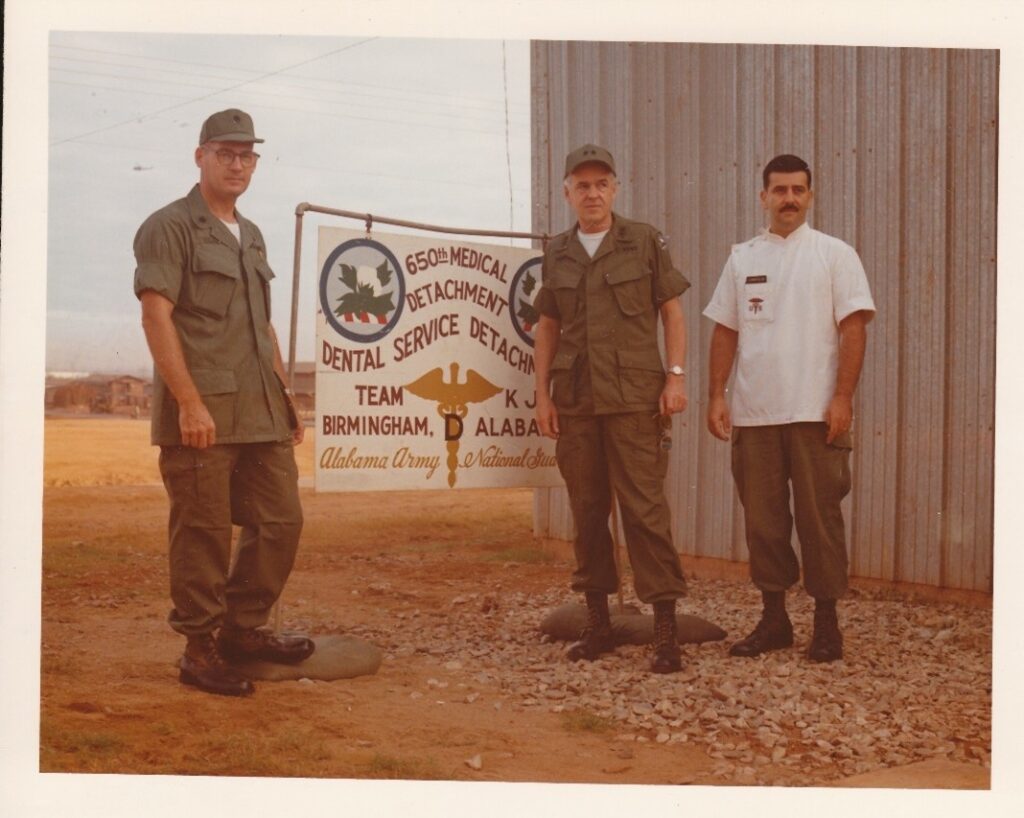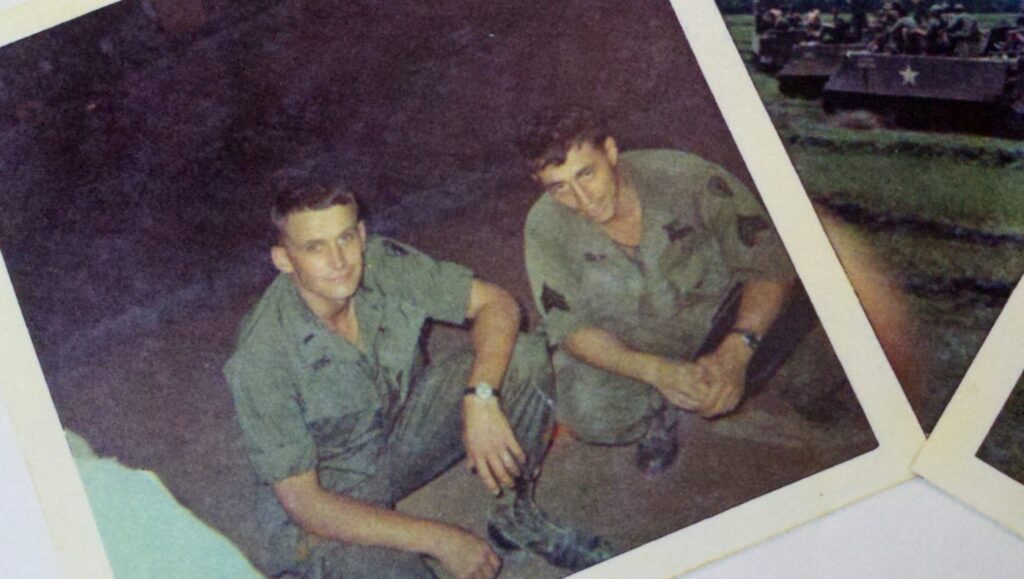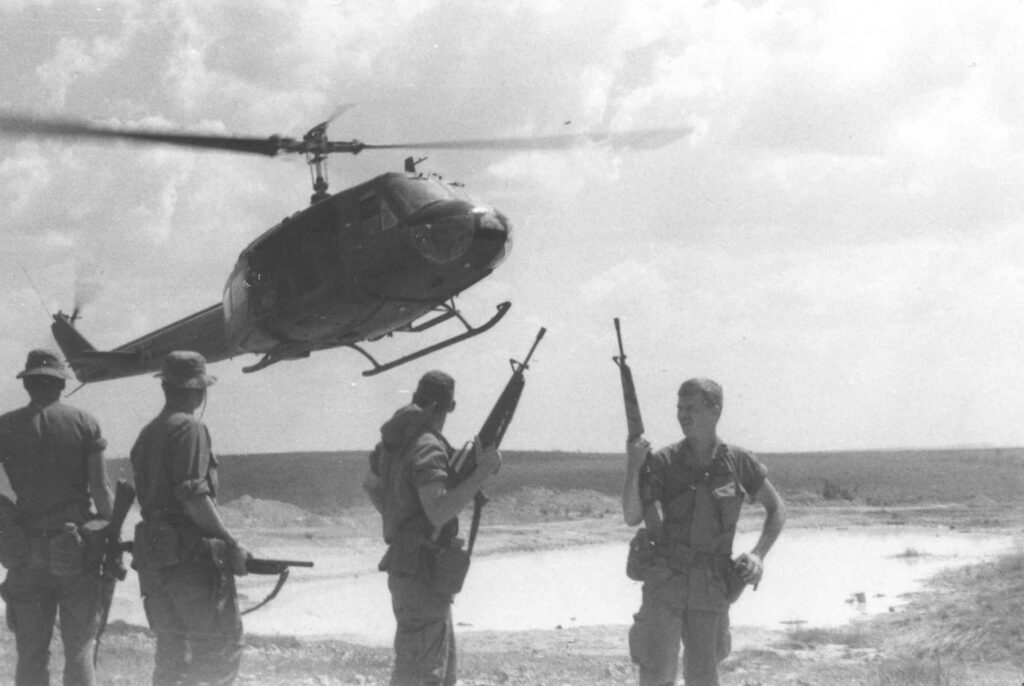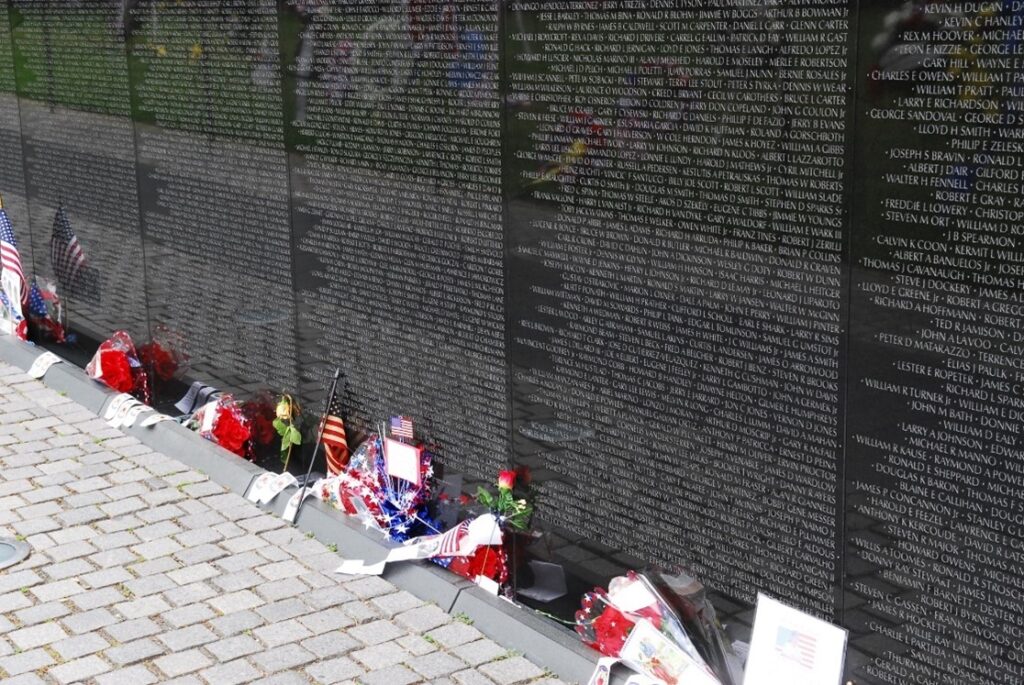By Will Roulett
President Obama released a proclamation that recognized May 28, 2012, through November 11, 2025, as the 50th anniversary of the Vietnam war. Congress cited five objectives of the Vietnam War Commemoration. The primary objective is to thank and honor veterans of the Vietnam War. 2023 will be marked by thousands of events recognizing Vietnam veterans.
The National Guard’s place in the Vietnam era is a challenging topic. According to a September 2002 National Guard Magazine article by CW2 John Listman (ret.), “the popular perception is that service in the Guard was solely a ‘dodge’ to being drafted and going to fight.” It’s true that the active component largely waged the war, supplemented by the ongoing draft. However, more than 9,000 Guard members did serve in Vietnam and 156 members died on active-duty orders during the Vietnam Era. Meanwhile, many guard units performed domestic operations at home, such as responding to civil unrest across the country, which further complicated the Guard’s role during the Vietnam era.
President Johnson resisted deploying Reserve and National Guard units to Vietnam because of concern over public backlash. It was felt that a few men drafted from a community was more palatable than a few hundred members of a community’s National Guard unit being mobilized. Nevertheless, beginning in September of 1965, certain Guard units began to train to go to war as part of a Select Reserve Force (SRF). Several of them were mobilized after the events of January 1968 in Vietnam.

(Courtesy of USMA History Department)
The Tet Offensive launched on January 31, 1968, was a series of well-coordinated surprise attacks across South Vietnam by the Viet Cong and North Vietnamese People’s Army of Vietnam, against South Vietnamese and American forces. Although the US and South Vietnamese defeated the attacking forces, the offensive was a psychological victory for North Vietnam. The offensive and rising tensions in the area prompted the Johnson administration to deploy Guard units and members as individual replacements to active-duty units.
The Air National Guard actually mobilized 11 units on January 25, 1968, a week before the Tet Offensive. Three more ANG units were mobilized on May 13. ANG units deployed to Vietnam and South Korea. Also on May 13, 34 Army National Guard units were mobilized, with many of their 12,234 members levied to active-duty units. Eight Army Guard units deployed intact to Vietnam, with the first arriving in August of 1968.

(Courtesy of NGEF Collection)
One of the levied Guard members was Roger Schultz of the Iowa National Guard who later rose to the rank of Lieutenant General and the position of Director of the Army National Guard. The uniform he wore in Vietnam is on display in the National Guard Memorial Museum.
Roger Schultz was born on October 13, 1945, in Le Mars, Iowa. He enlisted in the Iowa Army National Guard in 1963 at the age of 17. Reflecting on his more than 42 years of military service during a 2007 interview, “Signing up when I was a kid. A private in an Infantry company. Basic training before I was 18.” He felt that his time as a motor sergeant laid a strong foundation for the rest of his career. In 1967, Schultz received a commission from Iowa Military Academy and was assigned to the Iowa Army Guard’s 2nd Battalion (Mechanized), 133rd Infantry. “The unit I was in was a high priority unit, Selected Reserve Forces is what they were called.”
In a 2016 interview about his experience in Vietnam, Schultz explained that his unit “received additional training time and resources to prepare for short-notice mobilization. The expectation was a 7-day alert to mobilization status.” In 1968, nine months after his Officer Candidate School graduation, he was mobilized with the 2nd Battalion (Mechanized), 133rd Infantry. Before deploying to Vietnam, Schultz graduated from the US Army Jungle School in Panama and then deployed as an individual replacement to Vietnam.

(Courtesy of LTG Roger Schultz (ret.)
Arriving in Vietnam, Schultz was assigned to Company A, 2nd Battalion (Mechanized), 22nd Infantry, 25th Infantry Division as a rifle platoon leader and later to Higher Headquarters Company as a recon platoon leader. As a mechanized unit, road clearing, security, patrolling, and offensive missions were their main priorities. Despite being an individual replacement, Schultz felt accepted by men and Non-Commissioned Officers of the platoons he led, “…those four squad leaders didn’t really care much about where I grew up, what school I graduated from, where I’d been lately. All they wanted was a lieutenant and I was theirs.”
Schultz was saved by those men when a Rocket Propelled Grenade struck his vehicle on his first day in combat, “…kids around me, Soldiers around me saved my life that first day. No question about it.” He received two Purple Hearts and the Silver Star for heroism in combat for his service in Vietnam.
Schultz remembered his unit being a high percentage of draftees. He estimated well over 50%. At times his men would be bothered by the lack of support for what they were doing in Vietnam or upset to learn of civil unrest at home. However, he was impressed with their courage and camaraderie, which he attributed to the strong bonds formed because their lives depended on one another. Schultz said, “They were living the oath they took” to serve their country. Nothing in Schultz’s memory is more vivid than the selfless duty performance of his fellow Soldiers he served with in Vietnam.

(Courtesy of NGEF Collection)
After returning home, Schultz continued his National Guard service, rising through the ranks in Iowa to Deputy Adjutant General of the Iowa National Guard from 1995 to 1998. He emerged as a leader, shaping the role of the National Guard in a changing world. He was selected to be one of the Army Chief of Staff Reserve Component Fellows at the US Army War College, which surveyed Army officers about the integration of active and reserve components. He felt he needed “to work on Integration in a more deliberate fashion, so I started to study all this in more specific terms and that’s when I went out and expanded the survey…” Schultz was then assigned as Deputy Director of the Army’s Directorate for Mobilization Support, which established National Guard Civil Support Teams across the country that were equipped to respond to terrorist attacks.

(Courtesy of the National Guard Bureau)
These assignments prepared General Schultz for his Director of the Army National Guard appointment in 1998. In that role, he kept his focus on the National Guard members he served. “I do recall having a screen saver on my computer as the Director of Army Guard that asked, ‘What have you done for a Soldier today?’” His experiences in Vietnam remained with him until he retired in 2005 and are still with him today as he serves on the Advisory Committee for the Vietnam War Commemoration. “There’s a bond, a unique bond that soldiers in combat develop with one another… I didn’t understand the strength of those relationships. I didn’t understand what soldiering in combat meant… Until you’ve done it, you can’t explain it. Once you’ve been there, you are linked to your fellow Soldiers in a way that people don’t really understand.”
Please visit the National Guard Memorial Museum if you would like to learn more about National Guard history. If you’d like to attend any Vietnam War Commemoration events, you can find one close to you on their website.





